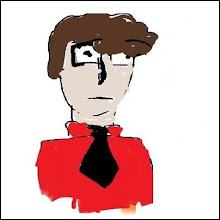
Every now and then, a writer and a character are matched with such precision that the work defines that character permamently. Examples would be Frank Miller writing Daredevil, Alan Moore writing Swamp Thing, and most recently, Garth Ennis writing the Punisher.
Several writers have tried the Punisher MAX comic since Ennis left and so far nobody has been able to move out of Ennis’ shadow. If anyone can make Punisher MAX their own, in the wake of Ennis’ historic run, it’s Jason Aaron.
His first storyline took a bold step to officialy remove the MAX stories from standard Marvel continuity by creating a new backstory, and a new version, of the Kingpin. This first storyline seemed to blend elements of Ennis’ Marvel Knights run on the character with the visceral carnage of the MAX run. The Mennonite assassin was reminiscent of the kind of villain Ennis was so great at creating. The second storyline created a MAX version of Bullseye. Again, Aaron seem to aping Ennis. The stories were good. After all, a poor man’s Garth Ennis can still be worth reading. Steve Dillon’s art is better than his original work on the Marvel Knights run, as his people don’t all seem to have the same facial features, a complaint I sometimes have with Dillon’s art.
It’s in the this third storyline that Aaron is making the Punisher is own. The storyline cuts back and forth between Castle in prison, feeling the weight of his age, and the time after he returned from Veitnam, but before he became the Punisher. Both of these storylines give us glimpses of Frank Castle we rarely see. In prison we see him weighed down with age and regret, and truly vulnerable. In Ennis’ run Frank could seem like a superhuman killing machine. Alone, weak and surrounded by vicious enemies, Frank seems more human. In the flashbacks we see a part of the Punisher that no one (to my knowledge) has ever told before. Here, Frank has come home from Vietnam and has, for all intents and purposes, turned into the Punisher. Only he wants to pretend that he is a normal person again.
At his work he injures a foreman harassing a female coworker, but backs down when he is tempted to kill the man. Instead he moves to a different job.
Whenever he is presented with an oppurtinity to revel in what he has become, he flees. His wife cries because she knows he hasn’t really come home from the war. It’s amazing no one has explored this area of his life before. Punisher: Born showed us Frank going over the edge, but there’s still a gap from then until his family actually dies.I eagerly wait to see Aaron’s frailer, more human Punisher deal with his tormentors in prison while the mechanical and dark Frank Castle struggles to deny his true self.
Dillon’s art is well known, especially on the Punisher. As usual, the art is simple, there aren’t a lot of shadows or complex actions. Dillon’s art was better suited to the Marvel Knights version of the character, but works in the MAX version well enough. I can’t help but prefer other past MAX artists, however, like Leonardo Manco, for example.
Overall, Aaron and Dillon seem like the first team capable of averting the inevitable collapse of the character after Ennis left, while still moving into new directions.

No comments:
Post a Comment